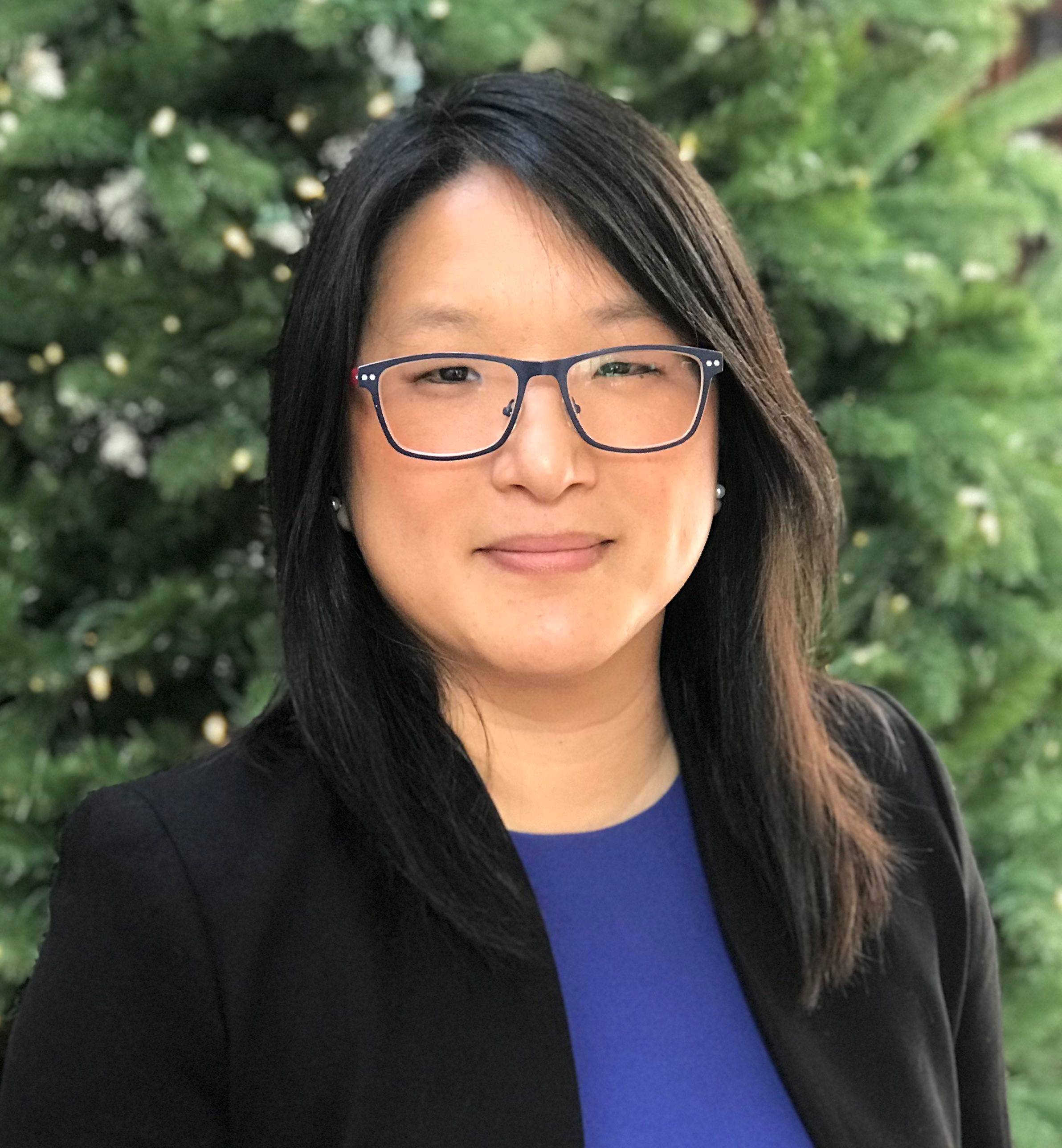Faculty
Maria C. Nagan, Professor of Practice
Associate Dean for Curriculum, College of Arts and Sciences

B.S. 1997, Grinnell College (Grinnell, IA)
Ph.D. 2001, University of Minnesota – Twin Cities
435 Chemistry, 631-632-5793
Email: maria.nagan@stonybrook.edu
RESEARCH
The Nagan lab employs computational methods to understand how chemical functional groups affect RNA structure and recognition.
UNDERGRADUATE RESEARCH Programs
•Chemistry REU Site (PI) - supported by NSF CHE-2050541
•Velay Program (PI) - supported by the Panaphil Foundation
•SUNY SOAR (co-PI) - supported by the SUNY Chancellor
REsearch Leadership
Amber Molecular Dynamics Software Executive Committee
REcent ROLES
ACS COMP Co-chair Programming, Mercury Executive Committee
AWARDS
Fellow of the American Chemical Society, Godfrey Excellence in Teaching Award, McNair Mentor Hall of Fame, Walker and Doris Allen Fellowship for Faculty Excellence
SELECTED PUBLICATIONS
1. Lauren E. Raguette, Sarah S. Gunasekera, Rebeca I. Diaz Ventura, Ethan Aminov, Jason T. Linzer, Diksha Parwana, Qin Wu, Carlos Simmerling, and Maria C. Nagan* Adjusting the Energy Profle for CH-O Interactions Leads to Improved Stability of
RNA Stem-Loop Structures in MD Simualtions. J. Chem. Phys. B. , 2024, 128 (33), 7921-7933. doi.org/10.1021/acs.jpcb.4c01910
2. Jason T. Linzer, Ethan Aminov, Aalim S. Abdullah, Colleen E. Kirkup, Rebeca I.
Diaz Ventura, Vinay R. Bijoor, Jiyun Jung, Sophie Huang, Chi Gee Tse, Emily Á lvarez
Toucet, Hugo P. Onghai, Arghya P. Ghosh, Alex C. Grodzki, Emilee R. Haines, Aditya
S. Iyer, Mark K. Khalil, Alexander P. Leong, Michael A. Neuhaus, Joseph Park, Asir
Shahid, Matthew Xie, Jan M. Ziembicki, Carlos Simmerling, and Maria C. Nagan* Accurately
Modeling RNA Stem-Loops in an Implicit Solvent Environment. J. Chem. Inf. Model, 2024, 64, 6092-6104. doi.org/10.1021/acs.jcim.4c00756
3. Hasan Metin Aktulga, Kellon Belfon, David S. Cerutti,Gerardo Andrés Cisneros, Vinícius Wilian D. Cruzeiro, Negin Forouzesh, Timothy J.
Giese, Andreas W. Goëtz, Holger Gohlke, Saeed Izadi, Koushik Kasavajhala Mehmet C.
Kaymak, Edward King, Tom Kurtzman, Tai-Sung Lee, Pengfei Li, Jian Liu, Tyler Luchko,
Ray Luo, Madushanka Manathunga, Matias R. Machado, Hai Minh Nguyen, Kurt A. O’Hearn, Alexey Onufriev, Feng Pan, Sergio
Pantano,Ruxi Qi, Ali Rahnamoun, Ali Risheh, Stephan Schott-Verdugo, Akhil Shajan,s Jason Swails, Junmei Wang, Haixin Wei, Xiongwu Wu, Yongxian Wu, Shi Zhang, Shiji
Zhao,Qiang Zhu, Daniel R. Roe, , Darrin M. York, David A Case, Thomas E. Cheatham, III,
Adrian Roitberg,C.L. Simmerling, Maria C. Nagan* and Kenneth M. Merz, Jr.*, AmberTools23, J. Chem. Inf. Model, 2023, 63 (20), 6183-6191. doi.org/10.1021/acs.jcim.3c01153.
4. Anderson, K., Arradondo, S., Ball, K.A., Bruce, C., Gomez, M.A., He, K., Hendrickson,
H., Madison, L., Ringer McDonald, A., Nagan, M.C., Scott, C.E., Soto, P., Tomlinson,
A., Varner, M. and Parish, C. “The Impacts of the Molecular Education and Research
Consortium in Undergraduate Computational Chemistry on the Careers of Women in Computational
Chemistry” J. Chem. Inf. Model, 2022,62(24), 6316-6322. doi.org/10.1021/acs.jcim.2c00566
3. Maddula, V., Rotenberg, S. A. and Nagan, M.C. “Computational Studies of the α/ß-Tubulin Heterodimeric
Interface in Microtubules: The Impact of Phosphorylation of Ser165 in α-Tubulin” Biochemistry, 2022, 61(14), 1508-1516. Cover. doi.org/10.1021/acs.biochem.2c00154
5. Nagan, M.C. “Using a Lab Wiki for Longevity and Knowledge Transfer in Undergraduate
Research” International Journal of Quantum Chemistry, 2020,120 (20), e26262. doi.org/10.1002/qua.26262
6. Palermo, G.; Armacost, K.A. and Nagan, M.C. “Women Make COMP: Mentoring the Next
Generation of Women in Computational Chemistry” J. Chem. Inf. Model, 2019, 59, 4061-4062. doi.org/10.1021/acs.jcim.9b00643
6. Witts, R.N.;Hopson, E.C.; Koballa, D.E.; Van Boening, T.A.; Hopkins, N.H.; Patterson, E.V. and Nagan, M.C. “Backbone-Base Interactions Critical to Quantum
Stabilization of Transfer RNA Anticodon Structure” J. Phys. Chem. B, 2013, 117, 7489-7497. doi.org/10.1021/jp400084p
7. Michael, L.A.; Chenault, J.A.; Miller III, B.R.; Knolhoff, A.M. and Nagan, M.C. “Water, Shape-Recognition, Salt Bridges and Pi-Cation Interactions
Differentiate Peptide Recognition of the HIV Rev-Responsive Element” J. Mol. Biol. 2009, 392, 774-786. doi.org/10.1016/j.jmb.2009.07.047
8. McCrate, N.E.; Varner, M.E.; Kim, K.I. and Nagan, M.C. “Molecular Dynamics Simulations of Human tRNALys,3UUU: The Role of Modified Bases in mRNA Recognition” Nucleic Acids Res.2006, 34, 5361-5368. doi.org/10.1093/nar/gkl580
